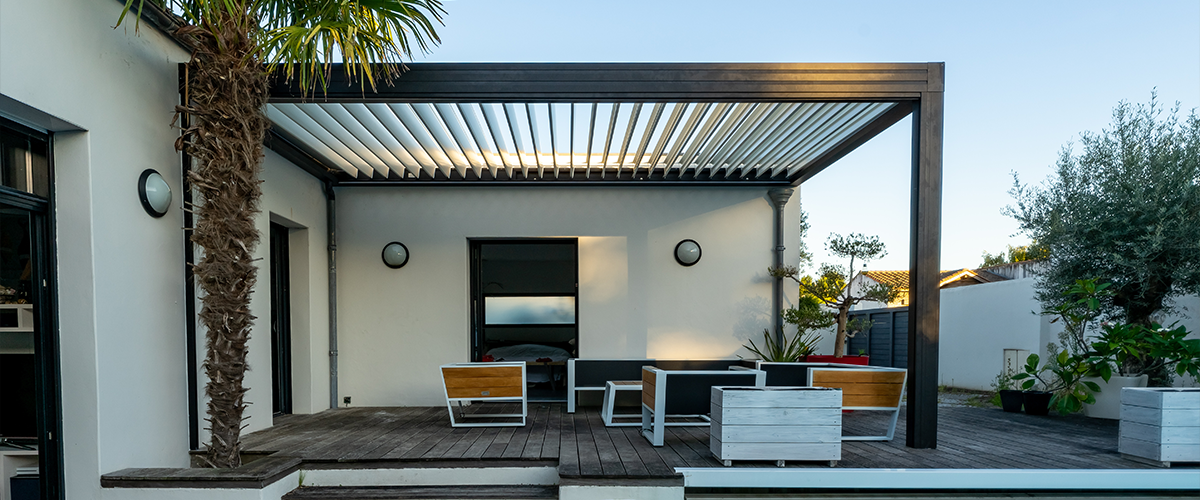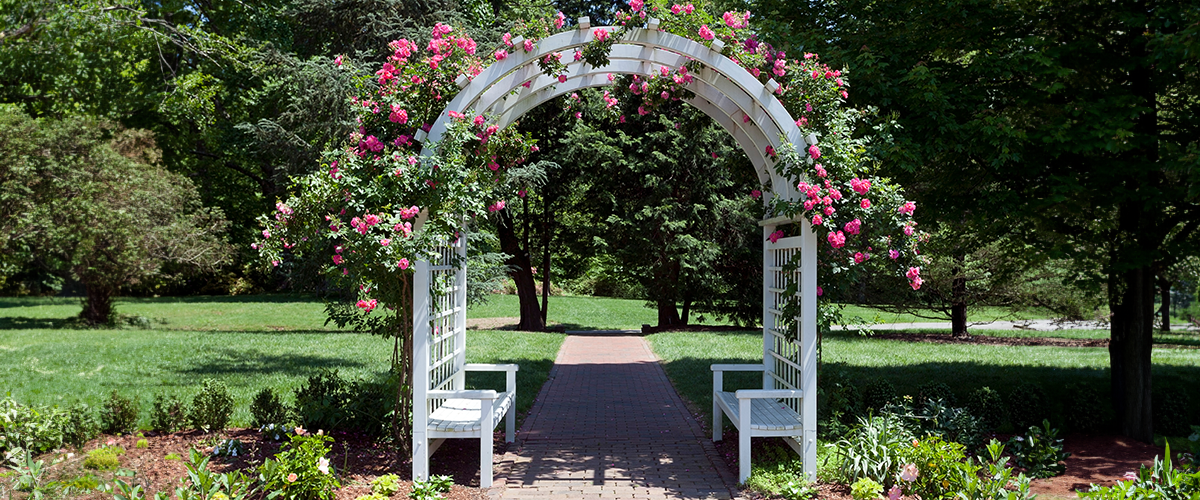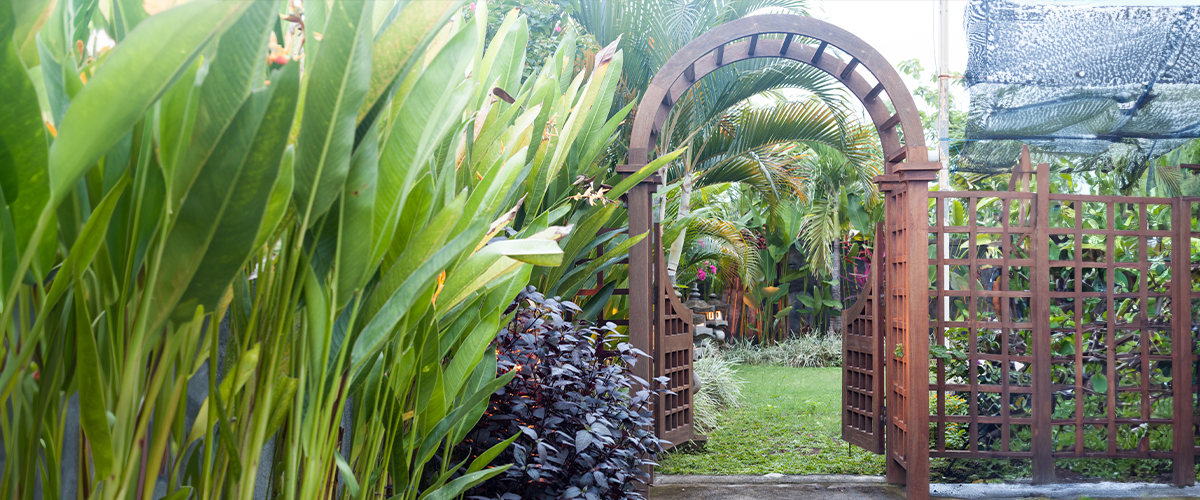Pergola vs Trellis vs Arbor: Making the Right Choice for Your Outdoor Space
Are you trying to decide between a pergola, trellis, or arbor for your garden? Each structure offers distinct advantages and serves different purposes in landscaping. This article will help you understand the differences, pros, and cons of each option, guiding you towards the perfect addition to your outdoor living space.

Understanding Pergolas, Trellises, and Arbors
Defining Each Structure
A pergola is a sizable outdoor structure, typically made from wood, metal, or vinyl, featuring a louvered roof that offers both sun and rain protection. Pergolas are excellent for creating outdoor living areas.
Arbors are smaller than pergolas, often designed with arched shapes and interwoven lattice pieces. They serve as beautiful entryways or garden accents.
Trellises are geometric structures primarily used to support climbing plants. They consist of simple frames with intersecting pieces called lattice. Unlike pergolas, trellises don’t provide shade or weather protection but are easily movable due to their smaller size.
The right landscaping structure can transform your garden into a stunning oasis.
Materials Used
The materials used in pergolas, trellises, and arbors vary, each adding a unique aesthetic and functional element to outdoor spaces. Pergolas often feature wood like cedar or redwood for their durability and natural look, while metal options provide a modern touch.
Trellises are typically made from wood or metal. Wood offers a natural, rustic appearance, while metal options like iron offer strength and durability.
Arbors, which may incorporate similar materials, often use vinyl for low maintenance. Their lattice frameworks effectively support climbing plants.
Common Uses
Pergolas are often used to create larger shaded spaces in gardens or patios, serving as outdoor living areas that can accommodate furniture like tables and chairs.
Arbors typically mark garden entryways or pathways, often incorporating a trellis to support climbing plants like roses or ivy, creating inviting, tunnel-like passageways.
Trellises support climbing plants and can be easily moved around the garden due to their smaller size compared to pergolas and arbors.

How Pergolas, Trellises, and Arbors Differ
- Size and Structure
Pergolas are larger structures designed to provide sun and rain protection, often serving as outdoor living spaces. Arbors are smaller, featuring open structures with interwoven lattice pieces, sometimes forming a tunnel-like passageway for climbing plants.
Trellises are the smallest and most flexible in terms of placement. Their geometric shapes make them ideal for training vines and other climbing plants, adding vertical interest to landscaping designs.
Unlike pergolas or arbors, trellises do not offer shade or rain protection but enhance the garden’s aesthetics.
- Purpose and Function
Understanding the purpose and function of each structure helps homeowners make informed decisions. Pergolas create comfortable outdoor living spaces by providing shade and rain protection, making them ideal for patios or walkways.
Trellises support climbing plants, serving as small, freestanding, and easily movable structures. Arbors combine features of pergolas and trellises but on a smaller scale, often supporting climbing plants while creating charming entryways or tunnel-like passages in gardens.
- Types of Plants Used
Different types of climbing plants thrive on pergolas, trellises, and arbors. Climbing roses and grapevines benefit from the sun and rain protection of pergolas, while clematis and morning glories flourish on trellises due to their need for vertical growth without shade.
Arbors, with their lattice frameworks, are perfect for plants like wisteria and honeysuckle, creating beautiful arches with flexible vines. Species like jasmine or ivy can add fragrance and greenery to any arbor structure.

Pros and Cons of Each Structure
- Shade and Protection Benefits
Pergolas provide significant shade and protection benefits, with larger structures that often include a roof or slatted top, offering sun and rain protection. This makes pergolas ideal for creating comfortable outdoor living spaces, allowing you to enjoy your backyard even on hot sunny days or mild rainy afternoons.
Arbors provide moderate shade but are primarily decorative. Their open design with lattice sides supports climbing plants, creating natural shade over time. However, arbors do not provide substantial rain protection but add charm to garden pathways while offering some relief from direct sunlight.
- Maintenance and Cost
Maintaining a pergola, trellis, or arbor involves different levels of care and expense. Pergolas usually require more maintenance due to their larger size and complex structure. Regular cleaning, staining, or painting can add to upkeep costs, and wooden pergolas might need treatment against pests and weather damage.
Trellises are typically smaller and easier to maintain, needing occasional repainting or replacing parts that support climbing plants. Arbors fall somewhere in between regarding maintenance needs. Their intricate design requires periodic checks for structural integrity and plant overgrowth management.
While arbors often incorporate trellises, they generally cost less than pergolas but more than simple freestanding trellises.
Choosing materials like metal can reduce upkeep costs across all these structures but may increase initial expenses.
Choosing the Right Structure for Your Outdoor Space
- Considerations Before Deciding
Consider the size and structure of your outdoor space. Pergolas are larger structures suitable for creating shaded areas or outdoor living spaces. Arbors, with their arched design and often incorporating trellis work, are perfect for garden entryways or narrow pathways. Trellises, usually small and geometric-shaped, are ideal for supporting climbing plants.
Think about your specific needs and budget. Pergolas might require more investment due to their size and material needs. Arbors, though smaller, add charm but may need regular maintenance if they have wooden elements prone to weather damage.
Trellises could be a cost-effective choice as they are generally small, easily movable, and require less maintenance.
- Complementary Design Ideas
Pair a pergola with outdoor furniture to create a cozy living space. Use weather-resistant cushions and a dining table underneath for an inviting atmosphere. String lights or fabric drapes across the beams for added charm.
Combine trellises with raised garden beds to maximize your gardening area. Position multiple trellises around your yard to support climbing plants like roses or morning glories. Mix different heights and shapes for visual interest in your landscaping design.
Install an arbor at the entrance of your garden pathway, using its arches to define the entrance beautifully while training blooming vines over it, creating a tunnel-like effect.
Benefits of Hiring a Professional for Installation
Hiring a professional ensures your pergola, trellis, or arbor is built to last. Professionals know the right materials and techniques to use, guaranteeing stability and durability. They provide precise measurements and alignments that are difficult for amateurs to achieve.
A skilled installer also saves you time and effort. Building these structures involves heavy lifting, cutting, and assembling parts accurately. Professionals handle unforeseen issues quickly without compromising the integrity of your outdoor space’s design.

Pergola VS Trellis VS Arbor - FAQs
Closing Thoughts
Understanding the unique features of pergolas, trellises, and arbors helps ensure the best fit for your outdoor space.
Pergolas offer substantial protection from sun and rain, making them ideal for creating comfortable shaded spaces. Constructed larger than both arbors and trellises, these structures can transform into extended living areas.
Trellises support climbing plants and add vertical interest to gardens due to their smaller size and freestanding nature. Arbors combine aspects of a pergola with intricate lattice work, adding charm through tunnel-like passages adorned with greenery.
At Farrell’s Lawn & Garden Center, we specialize in creating beautiful, functional outdoor spaces. Whether you need a pergola, trellis, or arbor, our expert team can help you choose and install the perfect structure to enhance your garden.
Transform your outdoor space with us and enjoy the benefits of a well-designed landscape.
Contact Farrell’s Lawn & Garden Center today at (419) 636-5429 to start your garden transformation journey.
